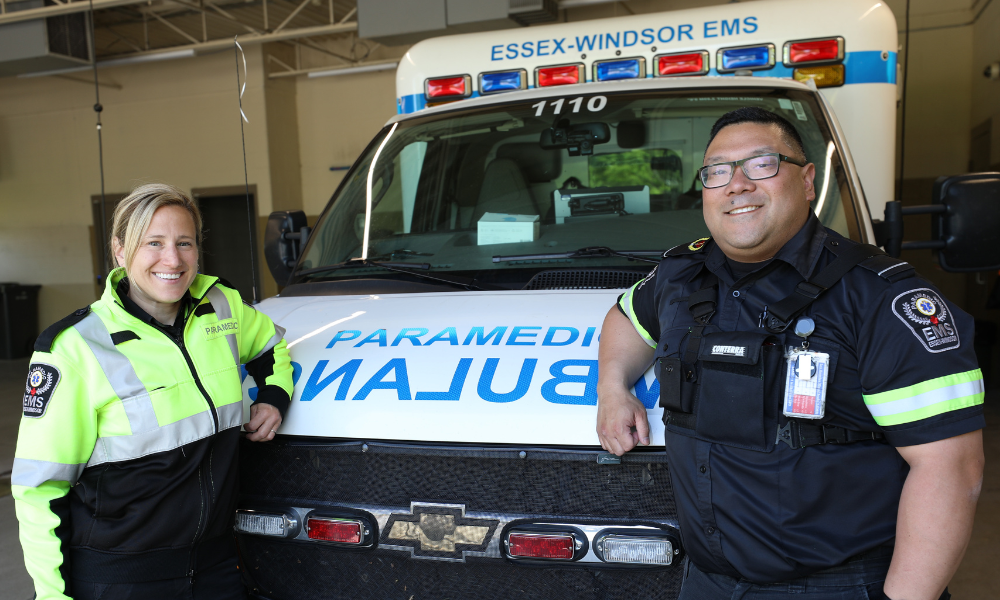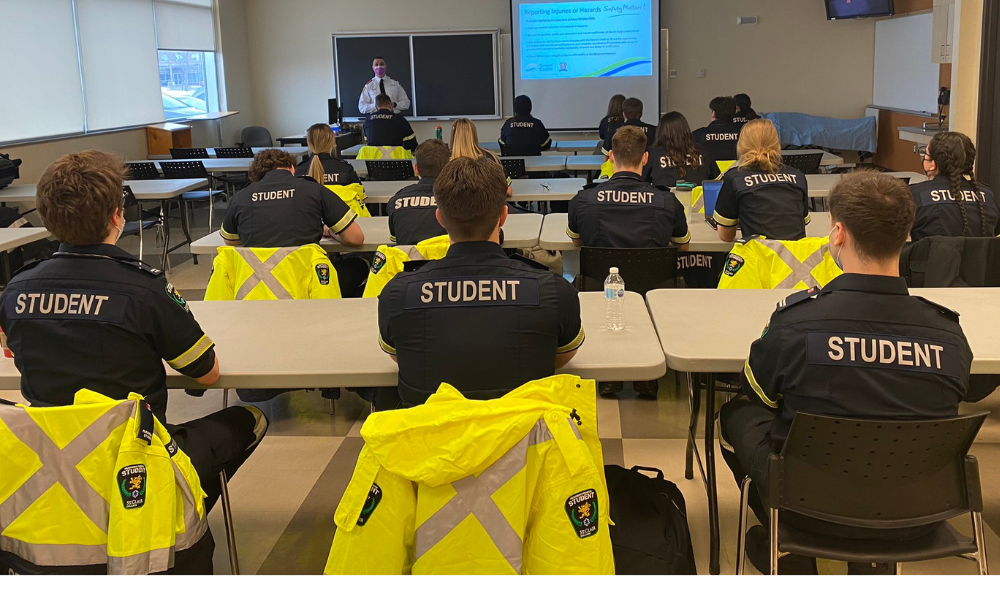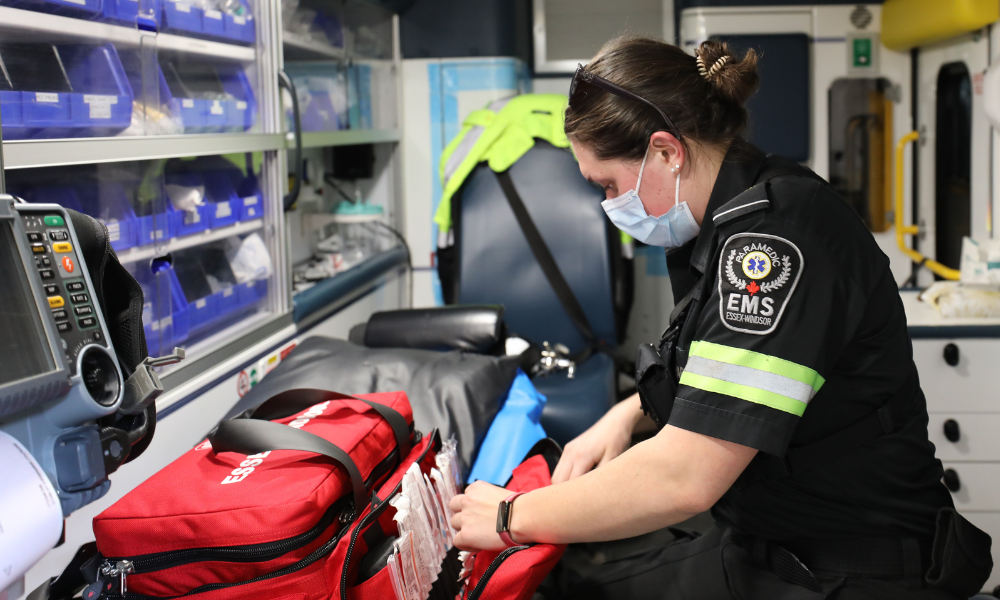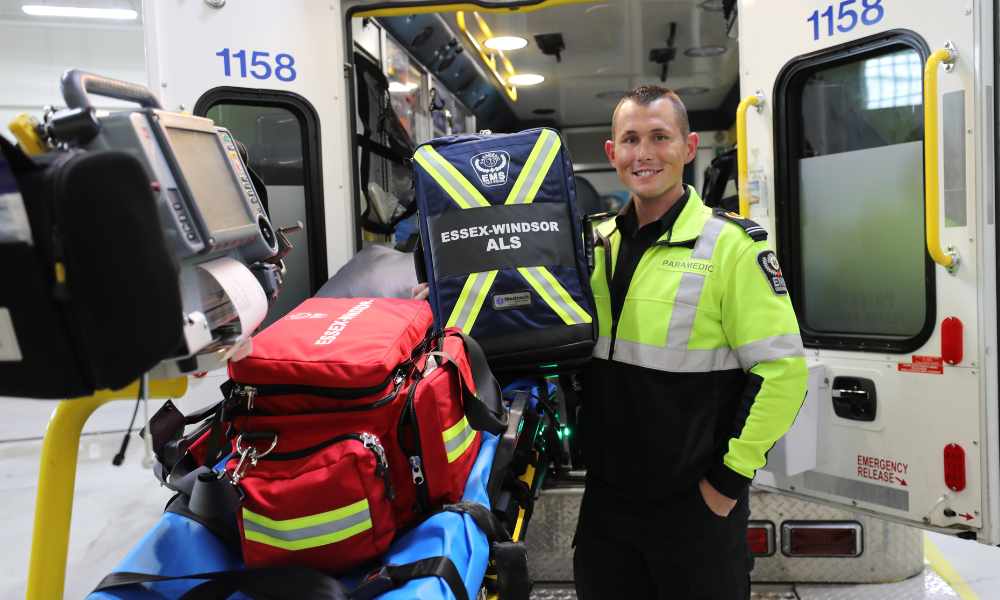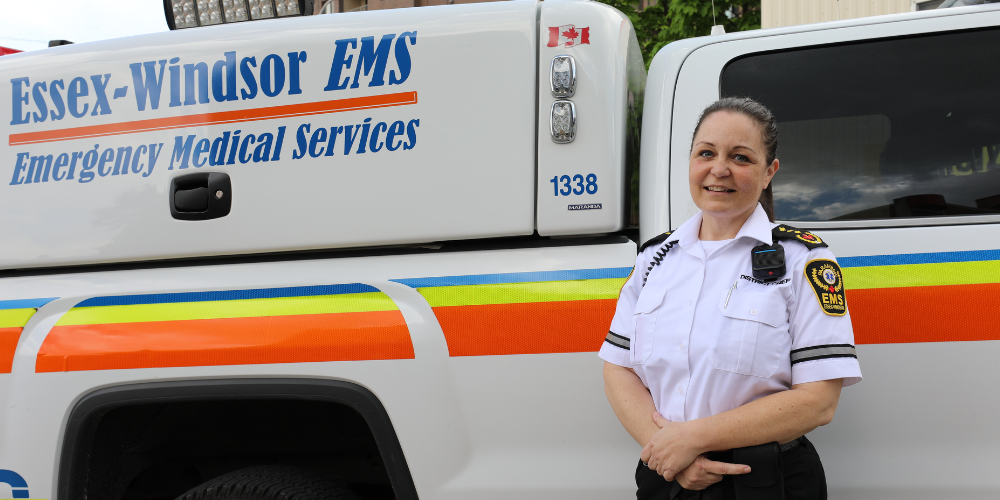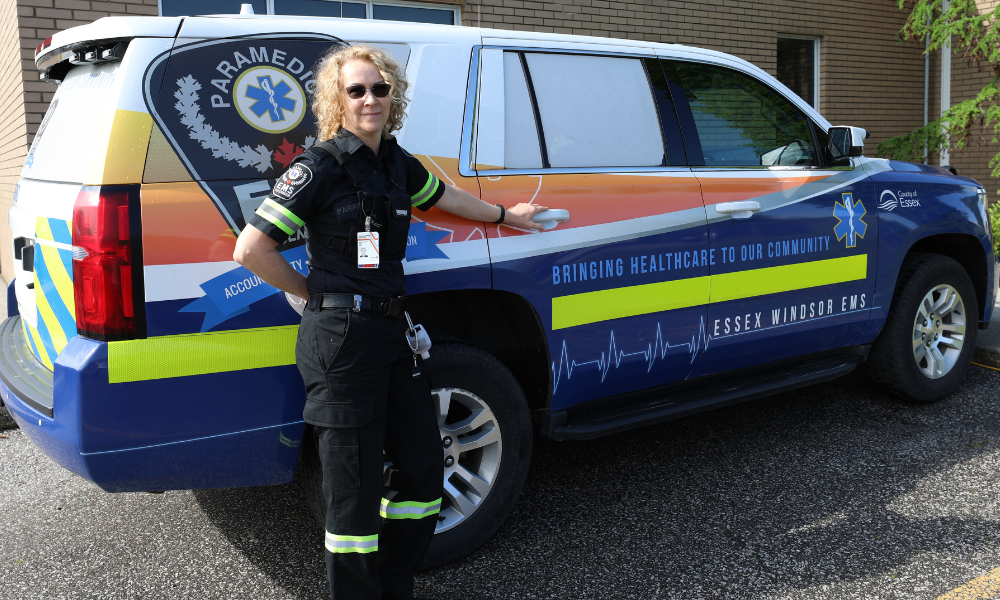Essex-Windsor EMS is proud to employ highly-skilled, college-trained paramedics who care deeply about this community and providing its residents with high quality pre-hospital emergency care.
Our paramedics go above and beyond 365 days per year. They strive to keep our citizens safe through community education programs and visits to special events and schools.
Free tuition!
The Ontario government has a Learn and Stay grant that will will provide aspiring paramedics with full, upfront funding for tuition and books and other educational costs if they enroll in paramedic programs in Northern Ontario and remain there for a term of service after graduation.
Learn more about this program!
What do paramedics do?
Our paramedics provide emergency patient care and transportation of patients. The procedures they can perform include:
- Operating a defibrillator;
- Administering medications;
- Providing oxygen therapy;
- Cardiac monitoring; and
- Performing cardiac ECGs.
Interested in more details about the medical procedures and drugs paramedics can administer? Go to the Ontario Paramedic Association website for a comprehensive list.
Paramedics also carry out some or all of the following duties:
- Assess extent of injuries or illness of trauma victims, patients with respiratory disease and stress, overdose and poisoning victims, industrial accident victims and other ill or injured individuals to determine emergency medical treatment.
- Communicate with ambulance dispatch centres, base hospital staff, police, fire, and family members to ensure relevant information is collected and proper treatment is administered
- Administer pre-hospital emergency care, such as cardiopulmonary resuscitation (CPR), oxygen, bandaging and splinting to patients.
- Establish and maintain intravenous treatment (IV), apply equipment for ventilation and circulation complications, administer medications and provide other emergency treatment to patients.
- Transport patients by air, land or water to hospital or other medical facility for further medical care.
- Document and record nature of injuries and treatment provided.
- Assist hospital staff with providing medical treatment, if necessary.
- Maintain ambulances, emergency care equipment and supplies.
The hours of work can vary due to the need to provide emergency services on a 24-hour basis.
Paramedics work both indoors and outdoors under a variety of weather conditions. The work can be physically and emotionally demanding when transporting patients, responding to emergencies or dealing with critically ill or injured individuals. Some risks are involved, such as exposure to diseases and illnesses, violence, and physical injury.
How to become a paramedic
To become a paramedic in the Province of Ontario, you must be a high school graduate. You must also attend a recognized paramedic program at an approved Ontario college. After completing the paramedic program, you must acquire Advanced Emergency Medical Care Assistant (A-EMCA) certification.
Generally, colleges require the following prerequisites to enroll in the paramedic program:
- Senior high school biology.
- Senior high school science.
- High school graduation diploma.
- Current standard first aid certificate.
- Current CPR C (basic rescuer level).
- Current immunizations - hepatitis B, DPT (diphtheria, pertussis, tetanus), MMR measles, mumps, rubella), proof of immunity to chicken pox, flu shot (recommended).
- Free from all communicable diseases.
- Class F Ontario driver's license.
- Be physically fit and able to lift.
- Be able to fluently read and write in the English language.
- Be at least 18 years of age - prior to graduating from college.

